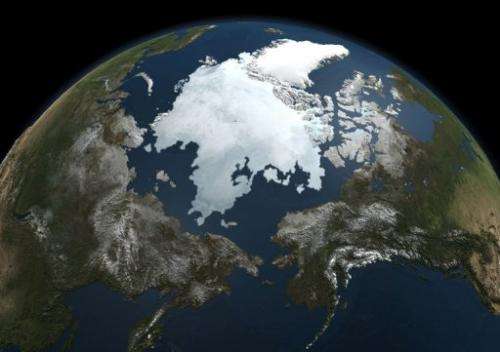Scientists say 15% carbon emissions cut needed

The chances of hitting the UN's global warming target are diminishing, but the goal can still be met if greenhouse-gas emissions fall by 15 percent by 2020, scientists said on Friday.
In a study issued at the world climate talks in Doha, they cautioned against mounting pessimism that the UN's objective of curbing warming to a safer two degrees Celsius (3.6 degrees Fahrenheit) is now out of reach.
"Limiting global warming below 2C, or even to below 1.5C, remains technically and economically feasible, but only with political ambitions backed by rapid action starting now," the team said.
"If nothing more is done except the current pledges, costs would be much higher to reach deeper reductions necessary, and/or the damage from climate impacts would be far greater."
In the runup to the 12-day UN talks which opened in Qatar on Monday, the World Bank gave a 20-percent likelihood of a 4C (7.2 F) rise by 2100 and said a 3C (5.4 F) rise appeared likely. Separately, the UN Environment Programme (UNEP) forecast a rise of 3-5C (5.4-9.0F) on the basis of current pledges.
"The window for reversing emission trends is rapidly narrowing," the "Climate Action Tracker" report issued on Friday said.
"Emissions must be reduced by roughly 15 percent from present levels by 2020 to be on a pathway holding warming below 2C" by 2100.

At present, emissions of heat-trapping greenhouse gases, blamed for damaging the planet's fragile climate system, are scaling new peaks.
Levels of carbon dioxide—the single most important man-made contributor to climate change—rose to 390.9 parts per million in 2011, which is 2.0 ppm higher than in 2010, the World Meteorological Organisation (WMO) said on Tuesday.
From 1990 to 2011, the warming effect of greenhouse gases has risen 30 percent, it said.
Scrutinising the actions of the four major emitters, the "Climate Action Tracker" said neither China, the United States, the European Union nor Russia were making adequate pledges to tackle their pollution.
But—with the exception of the United States—the pledges that they have made are likely to be met, it said.
China has surged in rankings to become the world's No.1 carbon polluter, voraciously burning coal to fuel its rise out of poverty.
Right now, China is on track for emissions in 2020 of 14.4 gigatonnes, or billion tonnes, of CO2 or its equivalent, said the report.
But—according to China's just-unveiled official plans—this "business-as-usual" figure will fall by 4.5 gigatonnes to 9.9 gigatonnes under an ambitious energy-efficiency programme.
"If accurate, this would be the largest single absolute reduction for any country in the history of action on climate change," said the report.
"By comparison, the emissions of the European Union in 2010 were 4.4 gigatonnes of carbon dioxide equivalent."
The "Climate Action Tracker" is a regularly updated report compiled by the Potsdam Institute for Climate Impact Research (PIK) in Germany; a non-profit German science and policy research organisation called Climate Analytics; and Ecofys, a European consultancy on renewable energy and carbon efficiency.
(c) 2012 AFP



















